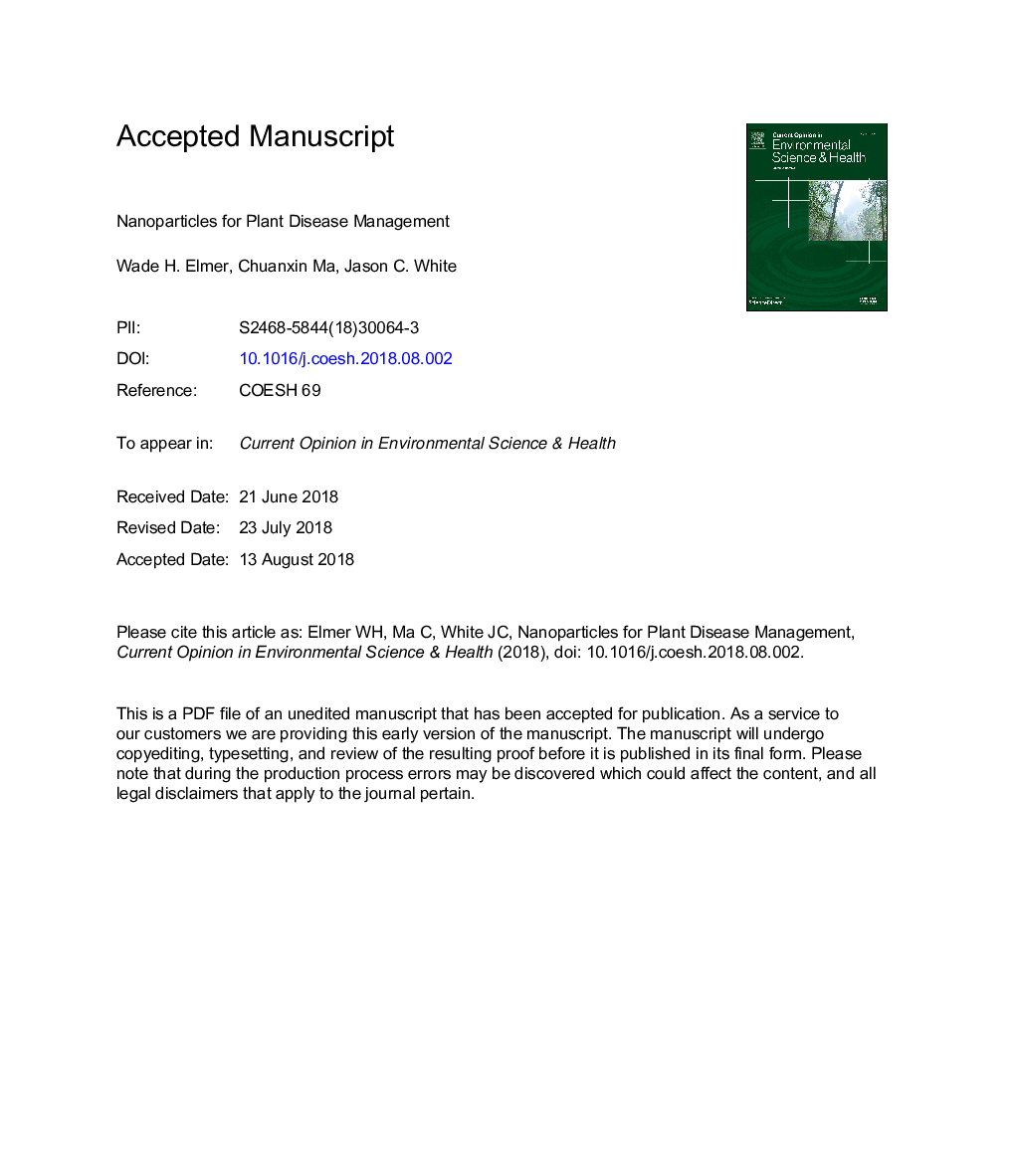| Article ID | Journal | Published Year | Pages | File Type |
|---|---|---|---|---|
| 10126726 | Current Opinion in Environmental Science & Health | 2018 | 18 Pages |
Abstract
Engineered nanoparticles (NPs) (1-100Â nm) that have demonstrated activity in suppressing plant diseases are metalloids, metallic oxides, nonmetals, and carbon nanomaterials. NPs have been integrated into disease management strategies as bactericides/fungicides and as nanofertilizers to enhance plant health. Although there are reports of over 18 different NPs of single element and carbon nanomaterials affecting disease and/or plant pathogens, only Ag, Cu, and Zn have received much attention thus far. Some NPs act directly as antimicrobial agents while others function more in altering the nutritional status of the host and thus activate defense mechanisms. For example, NPs of Ag and Cu can be directly toxic to microorganisms. Other NPs of B, Cu, Mn, Si, and Zn appear to function in host defense as fertilizers. As demand for food production increases against a warming climate, nanoparticles will play a role in mitigating the new challenges in disease management resulting in a reduction in active metals and other chemical inputs.
Related Topics
Life Sciences
Environmental Science
Environmental Chemistry
Authors
Wade Elmer, Chuanxin Ma, Jason White,
